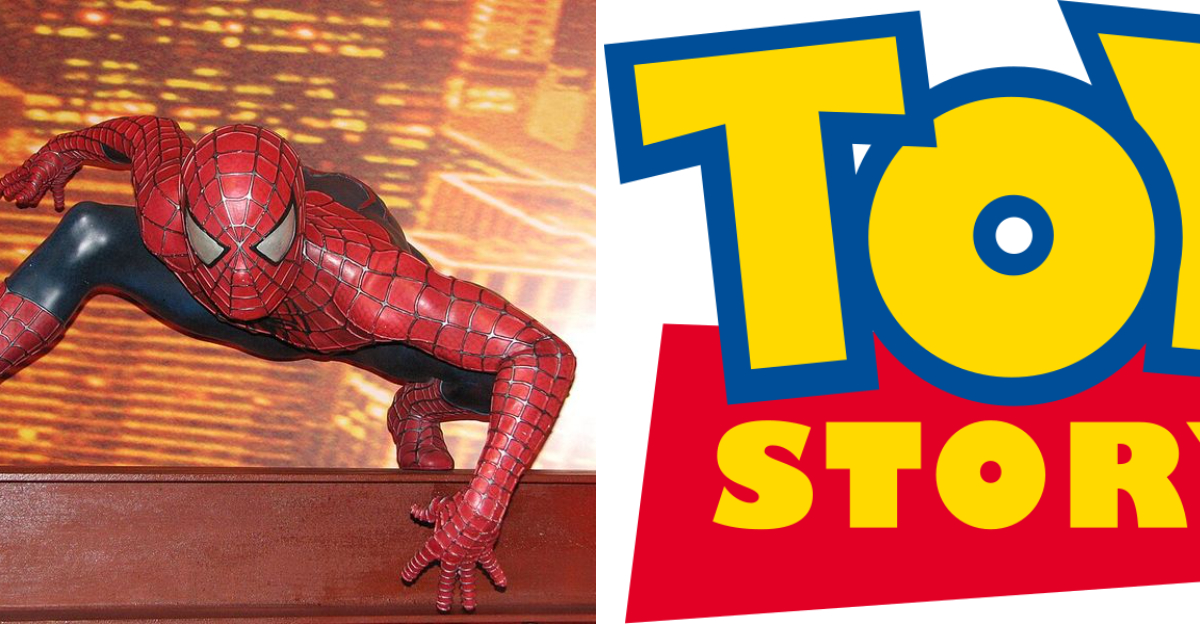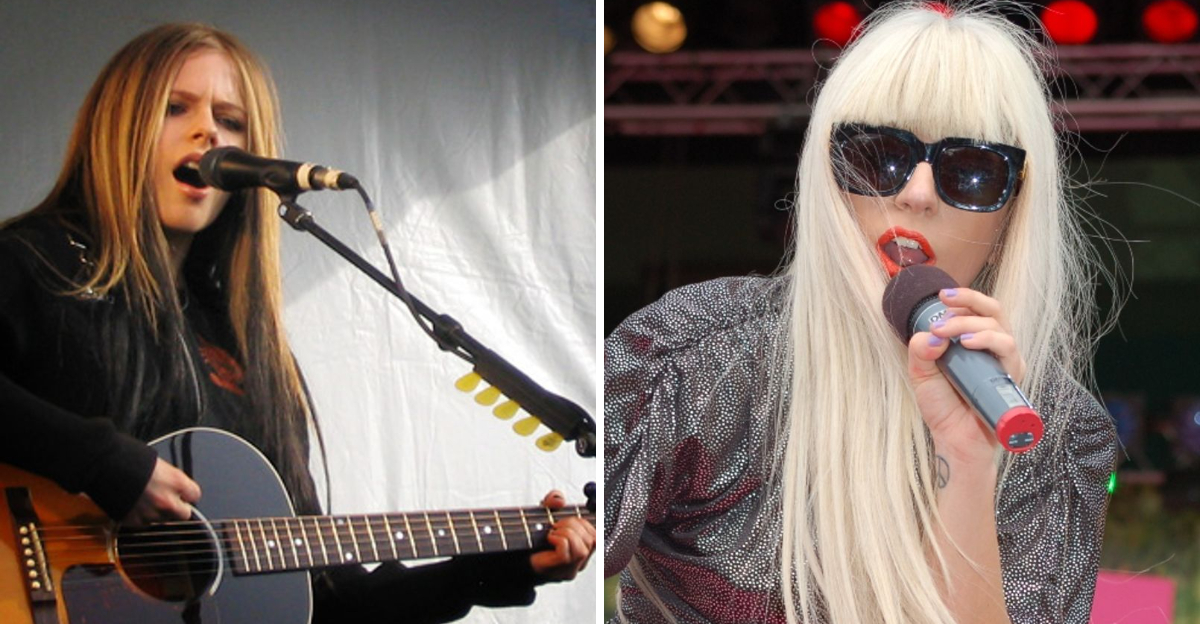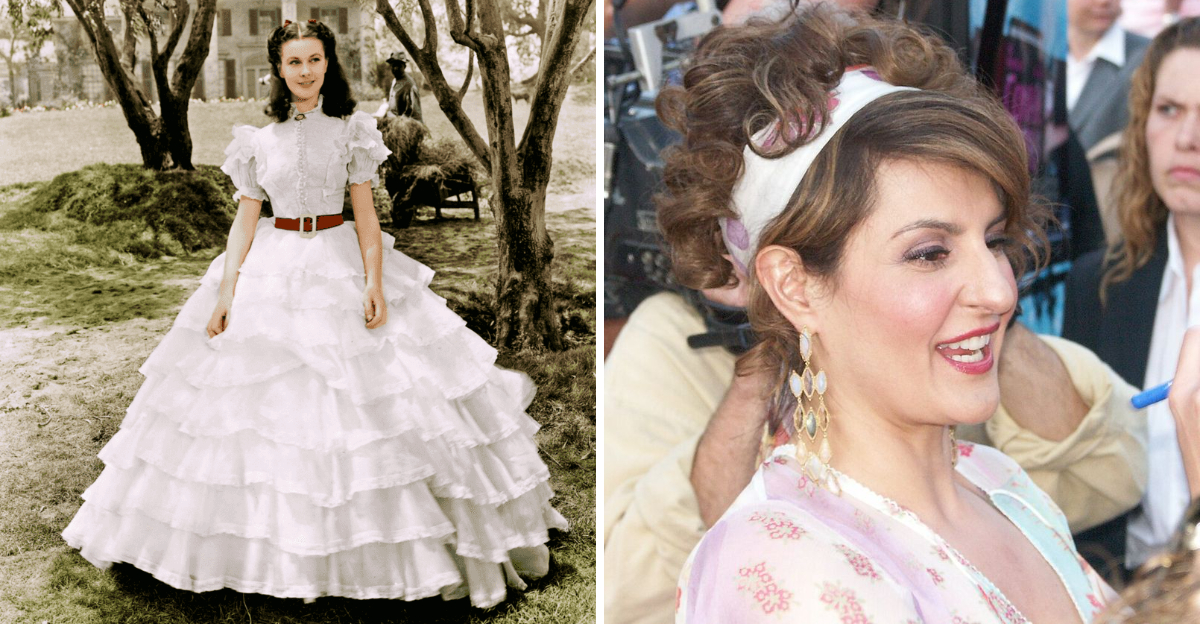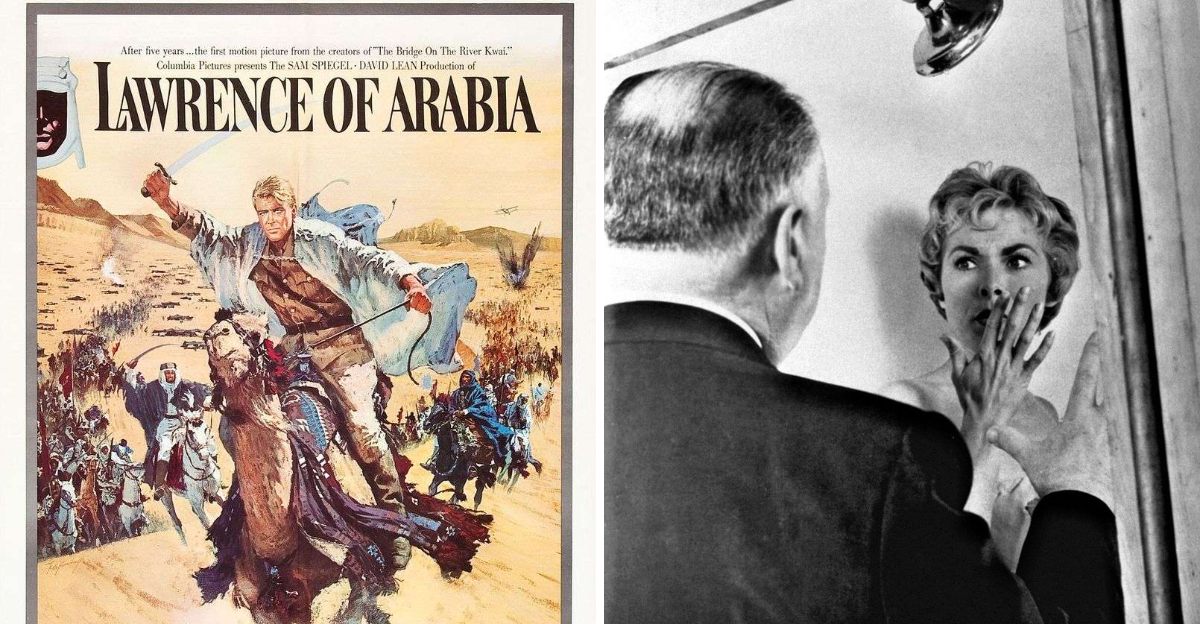Every Bite And Sip Ever Sung By The Beatles
Few bands have ever made the world hungry quite like The Beatles.
Their lyrics are sprinkled with food and drink references that range from playful to poetic – proof that even global superstardom couldn’t keep them from thinking about a good meal.
Tea, truffles, tangerines, and marmalade dreams all found their way into song, turning kitchen cupboards into lyrical playgrounds.
These weren’t just catchy tunes though; they were edible metaphors for love, longing, and everyday joy. Every bite and sip they sang about still feels deliciously timeless today.
1. Honey – A Taste of Honey, Honey Pie, Wild Honey Pie

Sweet as a melody, honey appears in not one, not two, but three Beatles classics.
Paul McCartney had a particular fondness for this golden nectar, using it as both a term of endearment and an actual ingredient reference.
“A Taste of Honey” was an early cover that showcased the band’s softer side, while “Honey Pie” brought vaudeville charm to the White Album.
“Wild Honey Pie” might be the strangest of the trio – a bizarre, experimental track that lasts less than a minute but sticks in your brain like, well, honey.
2. Wine – Norwegian Wood, Her Majesty, When I’m Sixty-Four

Sophisticated and smooth, wine flows through several Beatles tracks like a fine vintage. John Lennon sipped it in “Norwegian Wood,” where the narrator drinks wine and talks until two in the morning.
Paul references it in “When I’m Sixty-Four,” painting a picture of domestic bliss with wine and a cozy fireside.
Even “Her Majesty” gets a boozy mention, proving the Beatles knew how to pair their music with the perfect beverage for any occasion.
3. Strawberry – Strawberry Fields Forever

Nothing is real when you’re wandering through strawberry fields.
This iconic fruit became forever linked with John Lennon’s childhood memories of playing in the garden of a Salvation Army children’s home near his Liverpool house.
The song transformed a simple berry into a symbol of nostalgia and dreamlike escape.
Its psychedelic sound perfectly captures the feeling of biting into something sweet while your mind drifts to faraway places, making strawberries the most famous fruit in rock history.
4. Onion – Glass Onion

Layers upon layers – that’s what you get when John Lennon serves up this peculiar vegetable reference.
“Glass Onion” was his playful response to fans who obsessively analyzed Beatles lyrics for hidden meanings.
The song deliberately references other Beatles tracks while being intentionally cryptic about its own meaning.
Like peeling an actual onion, trying to understand every lyric might just make you cry, but the journey is deliciously entertaining and shows Lennon’s mischievous sense of humor at its finest.
5. Marmalade – Lucy in the Sky with Diamonds

Picture yourself spreading marmalade across the sky – now that’s a breakfast worth waking up for! This citrus preserve makes a fantastical appearance in one of the Beatles’ most psychedelic masterpieces.
“Marmalade skies” became one of the most memorable images from “Lucy in the Sky with Diamonds,” painting the heavens in shades of orange sweetness.
Whether inspired by Lewis Carroll or something else entirely, this preserve proved that even ordinary breakfast foods can become extraordinary when filtered through Lennon’s imagination and poetic vision.
6. Tangerine – Lucy in the Sky with Diamonds, Savoy Truffle

Bursting with citrus flavor, tangerines show up twice in the Beatles catalog. First, we encounter “tangerine trees” growing in that same psychedelic landscape where marmalade paints the sky.
Later, George Harrison name-drops this zesty fruit again in “Savoy Truffle,” his candy-and-dessert-filled ode to Eric Clapton’s sweet tooth.
The tangerine bridges the gap between trippy imagery and actual edible treats, proving that some flavors are too good to mention just once in your musical career.
7. Custard – I Am the Walrus

Goo goo g’joob – and pass the custard, please! John Lennon’s surrealist masterpiece “I Am the Walrus” features this creamy dessert in one of the most nonsensical lyrics ever written.
“Yellow matter custard dripping from a dead dog’s eye” might not be the most appetizing image, but it perfectly captures the song’s deliberate absurdity.
Lennon wanted to confuse overanalyzing fans, and mixing custard with disturbing imagery certainly did the trick while showcasing his boundary-pushing creativity.
8. Cornflake – I Am the Walrus

Breakfast gets weird when the walrus sits down for his morning meal. Cornflakes make their bizarre appearance alongside expert textpert choking smokers in this legendary track.
“Sitting on a cornflake” isn’t your typical breakfast scenario, but nothing about “I Am the Walrus” follows conventional rules.
Lennon transformed an ordinary cereal into part of his surrealist poetry, proving that even the most mundane pantry items could become art when viewed through his wildly creative and unconventional lens.
9. Egg – I Am the Walrus

Who is the Eggman? According to John Lennon, it might have been Eric Burdon, or maybe Humpty Dumpty, or perhaps just another nonsense phrase designed to perplex listeners.
“I am the eggman, they are the eggmen” became one of rock’s most quoted and debated lines.
The egg reference adds to the song’s Lewis Carroll-inspired absurdity, mixing childhood nursery rhyme imagery with adult psychedelia in a way only Lennon could crack – pun absolutely intended for your entertainment.
10. Bacon – Piggies

George Harrison serves up some sizzling social commentary with this pork product reference. “Piggies” satirizes the upper classes, and the bacon mention adds a darkly humorous twist to his critique.
The song suggests that piggies need a “damn good whacking,” and the bacon reference subtly reminds us of their ultimate fate.
Harrison’s wit shines through this seemingly innocent children’s song structure that actually contains sharp observations about society, class divisions, and human nature disguised as barnyard humor.
11. Fish – Penny Lane

Swimming through Penny Lane’s nostalgic streets, fish makes its appearance in Paul McCartney’s loving tribute to his Liverpool childhood neighborhood.
The “fish and finger pies” line references actual shops from his youth.
A finger pie, by the way, wasn’t just a pastry – it was also British slang for something rather different, showing McCartney’s cheeky wordplay.
The fish reference grounds the song in real Liverpool life, where seafood was a staple and local shops defined the community’s daily rhythms.
12. Coca-Cola – Come Together

John Lennon originally wrote “Come Together” as a campaign song for Timothy Leary’s political run, and he threw in a Coca-Cola reference for good measure.
The line “He say, ‘I know you, you know me'” was followed by “One thing I can tell you is you got to be free” over a groove as addictive as the soft drink itself.
Though the direct Coke mention is subtle, the song’s rhythm has that same fizzy, infectious quality that makes you want another sip.
13. Gin – Rocky Raccoon

Out in the Wild West town of Black Mountain Hills of Dakota, Rocky Raccoon’s story involves a showdown fueled by heartbreak and spirits.
Paul McCartney’s storytelling masterpiece includes a doctor who “smelling of gin” tends to Rocky’s gunshot wound.
The gin reference adds authenticity to this Old West tale, evoking images of dusty saloons and hard-drinking frontier doctors.
It’s a small detail that brings enormous character to the narrative, proving McCartney’s attention to atmospheric detail in his songwriting craft.
14. Tea – Good Morning Good Morning, Cry Baby Cry

Nothing says British quite like a proper cup of tea, and the Beatles referenced this national beverage twice.
In “Good Morning Good Morning,” John Lennon mentions meeting for tea, capturing everyday British social rituals.
“Cry Baby Cry” also features the King of Marigold having tea, adding a fairytale quality to the brew.
These references ground the Beatles’ cosmic explorations in the comforting, familiar ritual of teatime, reminding us they were Liverpool lads at heart despite their worldwide fame and experimental tendencies.
15. Rice – Eleanor Rigby

Picking up rice in a church where a wedding has been – Eleanor Rigby’s lonely task opens one of the Beatles’ most haunting songs.
Paul McCartney’s character study begins with this simple, sad image of a woman cleaning up after others’ celebrations.
The rice, traditionally thrown at weddings for good luck, becomes a symbol of Eleanor’s isolation and unfulfilled dreams.
This tiny detail speaks volumes about loneliness in modern life, transforming ordinary grains into poetry that still resonates decades later.
16. Chocolate / Truffle – Savoy Truffle

George Harrison wrote this entire song inspired by Mackintosh’s Good News chocolates, and truffles take center stage in his delicious composition.
The track was directed at Eric Clapton’s notorious sweet tooth and impending dental problems.
Each chocolate mentioned was an actual candy from the assortment box, making this perhaps the most accurate food inventory in rock history.
Harrison transformed a simple box of chocolates into a funky, horn-filled warning about indulgence, proving even dental hygiene concerns can become groovy.
17. Coconut Fudge – Savoy Truffle

Among the many sweets George Harrison catalogs in “Savoy Truffle,” coconut fudge gets its moment in the spotlight.
This creamy, tropical-flavored treat was part of the Mackintosh’s assortment that inspired the entire song.
Combining the richness of fudge with exotic coconut flavor, this candy represented the kind of indulgence Harrison was simultaneously celebrating and warning against.
The specific mention shows his attention to detail and genuine affection for these treats, even while cautioning his friend about the consequences of too much sweetness.
18. Cherry Cream – Savoy Truffle

Sweet and fruity, cherry cream chocolates were another delicacy from the Good News box that Harrison immortalized in song.
The combination of chocolate coating and smooth cherry-flavored cream made these candies particularly irresistible.
By listing each candy type individually, Harrison created a musical menu that listeners could almost taste.
The cherry cream reference adds to the song’s sensory richness, making it not just about music but about flavor, texture, and the dangerous pleasure of surrendering to your cravings completely and without restraint.
19. Apple Tart – Savoy Truffle

From chocolate assortments, George Harrison pivots to this classic British dessert in “Savoy Truffle.” Apple tart represents comfort food at its finest – flaky pastry filled with sweetened apples and warm spices.
The mention adds variety to Harrison’s dessert catalog and shows that his sweet-toothed friend Eric Clapton didn’t discriminate between chocolates and baked goods.
It’s a particularly British reference that grounds the song in the duo’s shared cultural background while warning that all these treats will eventually “oblivirate your teeth” with delicious consequences.
20. Pineapple – Savoy Truffle

Tropical and tangy, pineapple brings an exotic flavor to Harrison’s candy-filled composition.
Whether as a chocolate filling or a reference to pineapple-flavored sweets, this fruit adds international flair to the otherwise British assortment.
Pineapple was considered quite sophisticated in 1960s Britain, representing luxury and worldliness.
By including it in his catalog of indulgences, Harrison showed that Clapton’s sweet tooth had global reach, spanning from homegrown apple tarts to tropical delights that transported taste buds far beyond Liverpool and London.
21. Coffee – Savoy Truffle

Bitter meets sweet when coffee-flavored chocolates enter Harrison’s dessert inventory.
Coffee creams were a sophisticated choice in the Mackintosh’s assortment, appealing to more mature palates who enjoyed complex flavors.
The coffee reference also suggests the endless cycle of indulgence – eating sweets, drinking coffee, eating more sweets.
Harrison’s detailed catalog transforms a simple box of chocolates into a meditation on desire and consequence, with each flavor representing another temptation that’s impossible to resist despite knowing better about the impending dental doom.
22. Ginger Sling – Savoy Truffle

Spicy and sophisticated, the ginger sling adds a beverage to Harrison’s predominantly candy-focused catalog.
This cocktail reference suggests that Clapton’s indulgences weren’t limited to solid sweets but extended to liquid pleasures as well.
Ginger sling combines the warming bite of ginger with spirits and citrus, creating a drink that’s both refreshing and powerful.
The inclusion shows Harrison’s wit . even the drinks his friend enjoys might contribute to dental problems, especially when mixed with all those chocolates and tarts mentioned throughout the song.
23. Montélimar (Nougat) – Savoy Truffle

Fancy French nougat from Montélimar brings international prestige to Harrison’s sweet catalog. This chewy confection, made with honey, sugar, and nuts, was considered a delicacy imported from the south of France.
By including Montélimar specifically, Harrison elevated the song beyond simple British candy to acknowledge European sophistication.
It suggests that Eric Clapton’s sweet tooth had continental taste, seeking out the finest confections from across the Channel.
Even the most refined treats, however, couldn’t escape Harrison’s playful warning about dental consequences and overindulgence.
24. Pie – Honey Pie, Wild Honey Pie, Penny Lane

From honey varieties to finger pies, this dessert appears across multiple Beatles tracks. Paul McCartney seemed particularly fond of pie references, using them in both sweet ballads and nostalgic remembrances.
“Honey Pie” celebrates a showgirl with vaudeville charm, while “Wild Honey Pie” experiments with avant-garde sounds. “Penny Lane” brings us back to those cheeky finger pies sold in Liverpool shops.
Together, these references show that whether serious or silly, experimental or traditional, pie always had a place in Beatles lyrics and British culture.
25. Mustard – Mean Mr. Mustard

John Lennon created this character whose name comes from the tangy yellow condiment we all know.
Mean Mr. Mustard is a miser who sleeps in a park and shouts out rude words, making him one of the Beatles’ more colorful characters.
The name perfectly captures the character’s sharp, biting personality – much like the condiment itself.
Originally written during the White Album sessions but saved for Abbey Road, Mr. Mustard proves that even condiments can inspire memorable characters when filtered through Lennon’s imaginative and slightly twisted creative mind.






